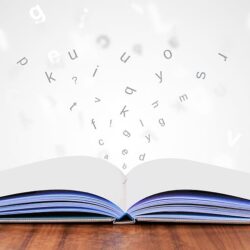Finally, another way to sail the seas of literacy, here you will find a steady stream of inspiration that may inspire ideas of strategy, scaffolding, goal setting and ultimately, student engagement! We are navigating through unchartered waters as we embark on this journey of post pandemic learning; we are working to combat the dwindling levels of literacy. It’s through struggle and visualization; its through sharing, storytelling and expression that we build connections and learn lessons thereby contributing to a rise in literacy levels. So let’s dive deep into this journey and let the chips fall where they may!

boy standing on the opened book and looking at other books floating in the air, digital art style,
Go on a Journey
Read & Explore the CAFE Blog
The most powerful time to teach reading is before students begin to read. The Blog Postings will walk you through instructional practices for reading and writing in across the content areas on all grade levels. I call these tools CAFE : comprehension, accuracy, fluency and effective vocabulary and engagement techniques. The research based topics that follow, will offer insight into barriers to comprehension, diagnostic tools and the most expedient ways to assess prior knowledge of individual students.
Visit the Corners of the Literacy Lounge
Reading Goals
comprehension
Reading problems begin at phonemes . Explicit instruction is needed.
- phonemic awareness
-multi-syllable words
-decoding and fluency
-gradual release of responsibility
( " I do , We, You do ")
Accuracy
Accuracy- describes how reading is done. At a suitable pace with expression. Similar to painting a picture. Described as leaving a colorful streak behind it that glowed for some time for it expresses words in a way that brings words to life in color.3
fluency
fluent readers read accurately. Not only with expression but quickly without having to decode or sound each syllable. Instead, The read quickly by grouping each word together to understand and build meaning of what they are reading.
Effective vocabulary 3
Model a Think -aloud.
this provides a rich window into vocabulary within the context clues.
















